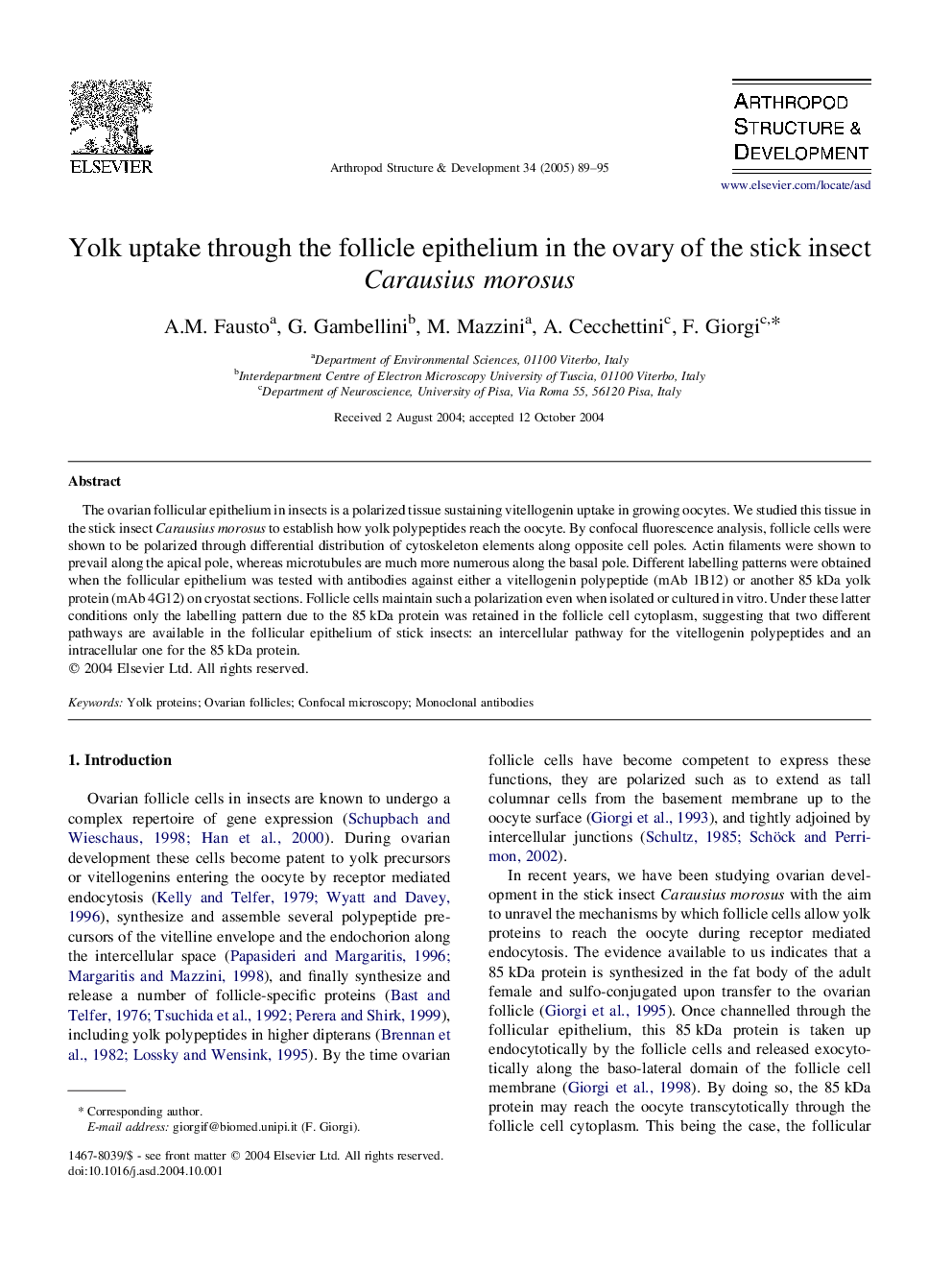| Article ID | Journal | Published Year | Pages | File Type |
|---|---|---|---|---|
| 9104160 | Arthropod Structure & Development | 2005 | 7 Pages |
Abstract
The ovarian follicular epithelium in insects is a polarized tissue sustaining vitellogenin uptake in growing oocytes. We studied this tissue in the stick insect Carausius morosus to establish how yolk polypeptides reach the oocyte. By confocal fluorescence analysis, follicle cells were shown to be polarized through differential distribution of cytoskeleton elements along opposite cell poles. Actin filaments were shown to prevail along the apical pole, whereas microtubules are much more numerous along the basal pole. Different labelling patterns were obtained when the follicular epithelium was tested with antibodies against either a vitellogenin polypeptide (mAb 1B12) or another 85Â kDa yolk protein (mAb 4G12) on cryostat sections. Follicle cells maintain such a polarization even when isolated or cultured in vitro. Under these latter conditions only the labelling pattern due to the 85Â kDa protein was retained in the follicle cell cytoplasm, suggesting that two different pathways are available in the follicular epithelium of stick insects: an intercellular pathway for the vitellogenin polypeptides and an intracellular one for the 85Â kDa protein.
Related Topics
Life Sciences
Agricultural and Biological Sciences
Insect Science
Authors
A.M. Fausto, G. Gambellini, M. Mazzini, A. Cecchettini, F. Giorgi,
